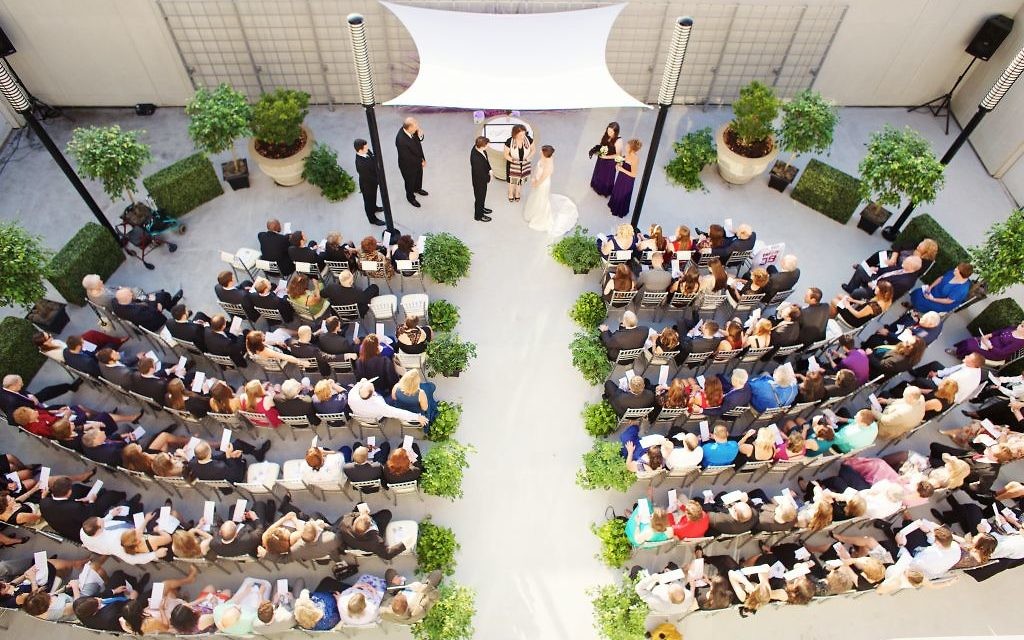With These Rings, We Take a Radical Step
Love and politics are naturally wed when two people, regardless of gender, choose to marry.
It was like a bad joke. Five days before our wedding, the rabbi called to say that she was pregnant and that for the health of the baby the doctor had forbidden her from flying to the ceremony. Fortunately, my mother was able to find a rabbi who agreed to do our traditional, creatively egalitarian ceremony as planned — with one change.
The rabbi was not comfortable with the insertion of a few words about our regret that even as we celebrated our marriage, there were others who, because of their sexual orientation, were not permitted to legally wed.
It was 1994, and the idea of gay marriage was far in the future even in the province of Ontario, which was early to the party, legalizing in 2003.
Get The AJT Newsletter by email and never miss our top stories Free Sign Up
The rabbi’s discomfort came, as he explained it, from moving the focus on the spiritual to the political.
I understood where he was coming from, but when you get down to it, when it comes to love and marriage, politics is often close by.
This month we are celebrating 50 years since the Supreme Court overturned all anti-miscegenation laws remaining in 16 U.S. states. There was nothing unusual about Mildred and Richard Loving’s relationship. Young and in love, they wed and wanted to raise a family together in their hometown. But because he was white and she was black, the politics of racism and prejudice stood in their way.
This month we are celebrating LGBTQ Pride. The June 28, 1969, police raid on the Stonewall Inn, a gay bar, prompted a revolt by those who faced significant legal and social discrimination because of sexual orientation. These riots were the start of the modern movement for gay rights. It would take 40 years before gay marriage was even a serious consideration.
Again, politics and love got mixed together.
According to traditional Judaism, when a man and woman get married, he does not place the ring on her ring finger but on another finger. Once it is placed there, the woman moves it to her ring finger to signify her active approval of the union.
In ancient times, when women were seen as chattel to be transferred from the father to the husband, that gesture was a radical statement about the personhood and agency of women.
My groom and I took this traditional commitment to the personhood of women further. One addition we made to our ceremony was to have me similarly give him a ring. We wanted our ceremony to reflect our commitment to a marriage of equals. In many quarters, the idea that men and women are truly equals is still politically charged.
Even without the mention of limitations then placed on gay marriage, our deeply traditional Jewish wedding, which was a ceremony celebrating the love a straight white man and a straight white woman shared, was not devoid of political context.
But that was not what I told the rabbi. After all, we did not know each other, and he was extraordinarily generous with his time and otherwise easily embraced our mix of traditionalism and egalitarianism — something that many rabbis at the time would not have done for a whole host of political and spiritual reasons.
Instead, I made it personal, explaining that one of my best friends, only recently out of the closet, would be in the congregation, and I knew that while he was thrilled for us to marry, it was also painful for him, knowing it was not an option he had.
In the end, the rabbi included the short piece about LGBT love. To this day, I don’t know if most people noticed.
They barely noticed that there were two rings exchanged or other feminist shifts. What they did see is what I see every time I officiate at a wedding: the miracle of two people, among the billions on Earth, finding each other, recognizing the true awesomeness of the other in a way that no one else does so fully, and taking the leap of faith that they will be able to maintain their connection and nurture each other over the course of time.
No matter who they are, there is nothing more radical than that.





comments